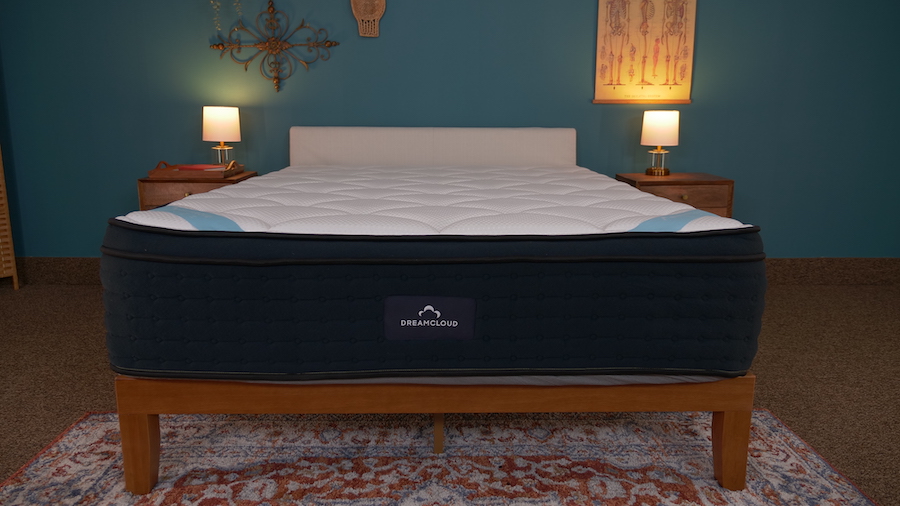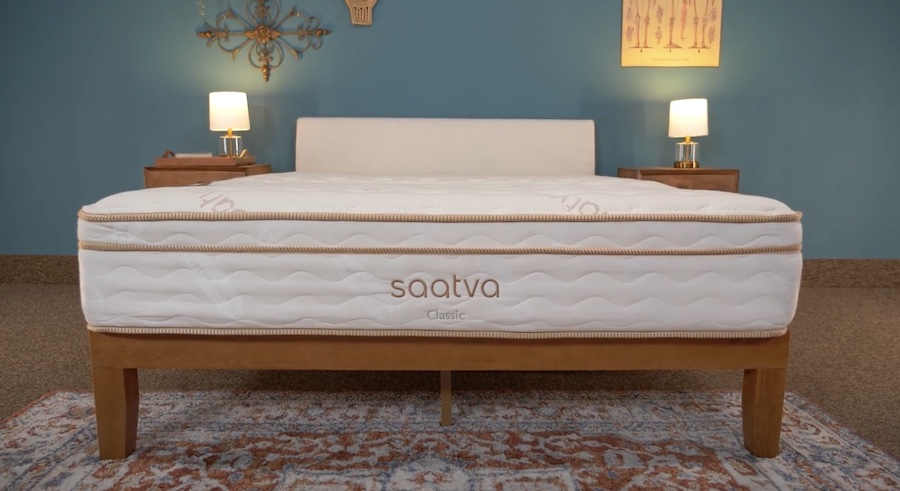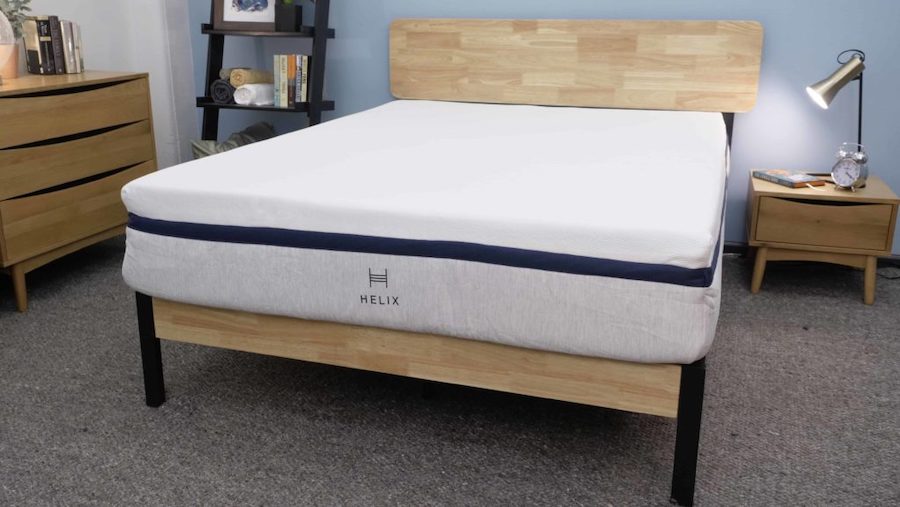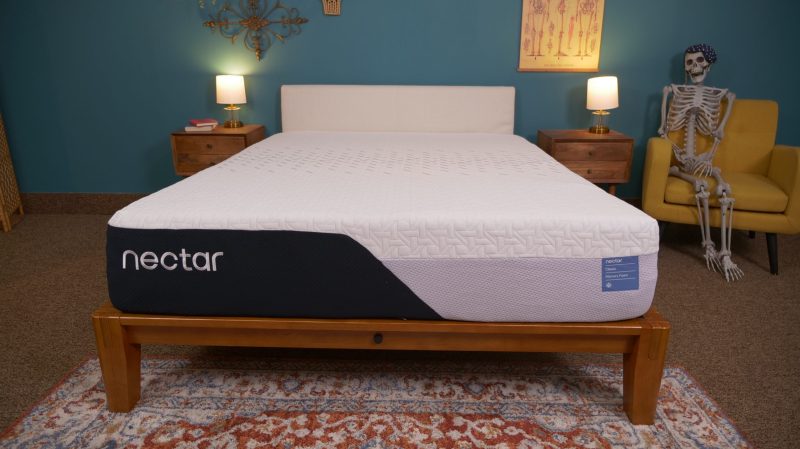Sleeping on a flat surface might be the norm, but what if there were something better?
Imagine your sleep space not only providing you a better night’s rest but also benefits that could make your life exponentially healthier.
Inclined beds have been gaining popularity as an alternative to traditional flat surfaces thanks to their rumored health advantages.
This article will sift through the hearsay to provide informed research on inclined bed therapy, including the important benefits and side effects you need to be aware of when considering this sleep position.
What Is Inclined Bed Therapy?
Inclined bed therapy attempts to use the power of gravity to reap additional health benefits while you rest. Rather than lying horizontally as you do on a flat bed, your upper body is raised to create an incline.
Sleeping on an angle even has some historical significance. Researchers have discovered ancient Egyptian tombs containing elevated headrests that are believed to have both pragmatic and religious purposes.1
In modern society, elevated beds are common in hospitals for recovering patients, and for those seeking a reprieve from disruptive health-related ailments, inclined beds could be the answer.
Benefits of Sleeping on an Incline Bed

Sleeping on an incline is observed as a potential form of treatment for a variety of conditions that include poor circulation, sleep apnea, snoring, acid reflux, multiple sclerosis, spinal injuries, and cerebral palsy. The simplest, most comfortable way to achieve this position is by using an expert recommended adjustable bed frame.
Most bedding manufacturers, understanding the rise in demand for adjustable frames, are now producing these products in addition to their traditional flat frames. For those seeking the health benefits of inclined resting, there are many high-quality adjustable beds available online, along with excellent mattresses for adjustable beds.
Sleep Apnea and Snoring
Sleep apnea is a disorder in which your breathing continually stops and starts while you’re asleep. The most common cause is from obstructions in the back of your throat, and if left untreated, could lead to complications like high blood pressure, heart problems, diabetes, and more.2
Resting at an angle should help open up your airways to prevent them from becoming obstructed., and snoring, which is a symptom of sleep apnea, may be reduced as well.
Need more info? See more significant facts about sleep apnea here.
Explore our picks for the best mattress for sleep apnea and the best bed for snoring.
Acid Reflux
Gastroesophageal reflux disease (GERD) occurs when acid reflux from the stomach makes its way up into the esophagus, which can lead to irritation and a burning sensation that not only causes you pain but also keeps you up at night.
Elevating your head and torso, however, allows gravity to help keep that acid reflux down. To help treat GERD, experts recommend raising your head 6 to 9 inches.3
Blood Circulation
Take advantage of your adjustable base by not only elevating your torso but your legs and feet as well. For those who have poor circulation, this zero gravity sleep position could prove very beneficial because the elevation makes it easier to pump blood to your heart.
Better blood flow ensures your lungs, heart, and muscles are working well and can help strengthen your immune system.4
Nervous System Problems
The nervous system transmits signals from the brain to the rest of the body, affecting your ability to move, think, breathe, and more. The primary components are the brain, spine, and the spine’s extending nervous. Spinal cord injuries, multiple sclerosis, and cerebral palsy are all examples of nervous system issues.5
It’s possible that resting on an incline, with both your upper and lower body elevated, may alleviate the symptoms associated with these conditions. This is because it reduces the pressure placed on your spine and the surrounding nerves.
Brain Detoxification
A 2013 study suggests that the brain detoxifies itself during sleep by flushing out harmful molecules associated with neurodegeneration.6 This “plumbing system,” as they refer to it, is known as the glymphatic system, which helps control the flow of cerebrospinal fluid (CSF), the clear liquid surrounding the brain and spine.
While the research supports a correlation between good sleep and a healthy brain, there is no evidence that inclined sleep directly improves this detoxification process. Rather, inclined sleep could help you detoxify simply by allowing you to get better sleep.
Other Breathing Disorders
As mentioned, resting on an angle could improve sleep apnea and snoring, and it may also help with other breathing disorders.
Sleep-related hypoventilation and hypoxemic syndromes are examples of sleep-related breathing issues that can affect oxygen levels in the body.7 For those experiencing any of these disorders, improved breathing by resting with your body elevated may alleviate your symptoms and prevent these conditions from worsening.
Potential Inclined Bed Therapy Side Effects
While inclined beds may sound appealing for adults with certain medical and health conditions, new parents should not consider them for babies.8 This is because inclined baby sleepers can increase the chances of a child’s airways compressing, which could lead to suffocation. Instead, babies should sleep on their back on a firm, flat surface.
Adults at a higher risk of blood clots should consult with their doctor before using inclined bed therapy. This is because the elevated position is similar to sleeping while seated, which can increase a person’s chance of developing deep vein thrombosis.9
Browse some of our favorite adjustable mattresses:
Product
Type
Score

Product
Type
Score
Frequently Asked Questions
Is it good to elevate your legs while sleeping?
Varicose veins can form when the valves in your veins become weak or damaged.10
Complications from varicose veins might include bleeding, blood clots, and ulcers, and experts recommend elevating your legs as one way to prevent these from forming.10
Elevating the legs is also widely known to help improve blood circulation, and for women who are pregnant, this could help reduce their risk of swollen legs and feet due to edema.11 Also, as previously mentioned, good blood circulation keeps your body functioning properly and efficiently.4
Further, you may also find that sleeping with your legs elevated alleviates pain in your lower back by minimizing pressure on the spine.
What can I use to elevate the head of my bed?
Your best bet would be to invest in a high-quality adjustable bed and compatible mattress that allows you to get into this position easily. That being said, not everyone has the immediate budget to purchase an entirely new bed. A good wedge pillow, however, is an alternative, cheaper option that’s also highly multi-functional.
Depending on the position you put them in, wedge pillows can support you in an upright position or with a gentle, more moderate slope. They can also be placed underneath the knees when you need to elevate your legs instead.
Is sleeping on an incline bad for your back?
Sleep on an incline could benefit your back, but you got to be careful how you go about it. According to Sleep Advisor’s Chief Medical Advisor, Dr. Raj Dasgupta, you should be mindful of how high the incline is. “If it’s too steep or doesn’t support your back well, it can strain your back leading to discomfort.”
Is it better to sleep on an incline or decline?
Between the two, sleeping on an incline would be the better choice. Dr. Raj explains, “It’s generally not recommended to sleep on a decline. The downward angle can cause your blood to pool around your upper body, potentially causing swelling in those areas and may lead to headaches. It’s always best to ask your doctor for advice tailored to you.”

Jill Zwarensteyn
Senior Editor
About Author
Jill Zwarensteyn is the senior editor for Sleep Advisor and a certified sleep science coach. She is enthusiastic about providing helpful and engaging information on all things sleep and wellness.
Combination Sleeper
Education & Credentials
- Certified Sleep Science Coach
References:
- “HEADRESTS IN GLENCAIRN’S EGYPTIAN COLLECTION: PRACTICALITY AND PROTECTION”. Glencairn Museum. 2018.
- “Sleep apnea”. Mayo Clinic. Last modified April 6, 2023.
- “Gastroesophageal reflux disease (GERD)”. Mayo Clinic. Last modified January 4, 2023.
- “Why Good Blood Circulation Is Vital To Your Health”. Gilvydis Vein Clinic. 2023.
- “What are the parts of the nervous system?”. Eunice Kennedy Shriver National Institute of Child Health and Human Development. Last modified October 1, 2018.
- “Brain may flush out toxins during sleep”. National Institutes of Health. 2013.
- “Sleep-related Hypoventilation and Hypoxemic Syndromes”. Northwestern Medicine. Webpage accessed November 28, 2023.
- “New Infant Sleep Guidance: Law Bans Inclined Sleepers, Bumpers”. University Hospitals. 2022.
- “Is it dangerous to sleep sitting up?”. Harvard Health. 2019.
- “Varicose veins”. Mayo Clinic. Last modified March 3, 2022.
- “Edema”. Mayo Clinic. Last modified July 28, 2023.


